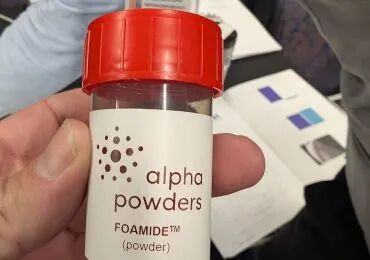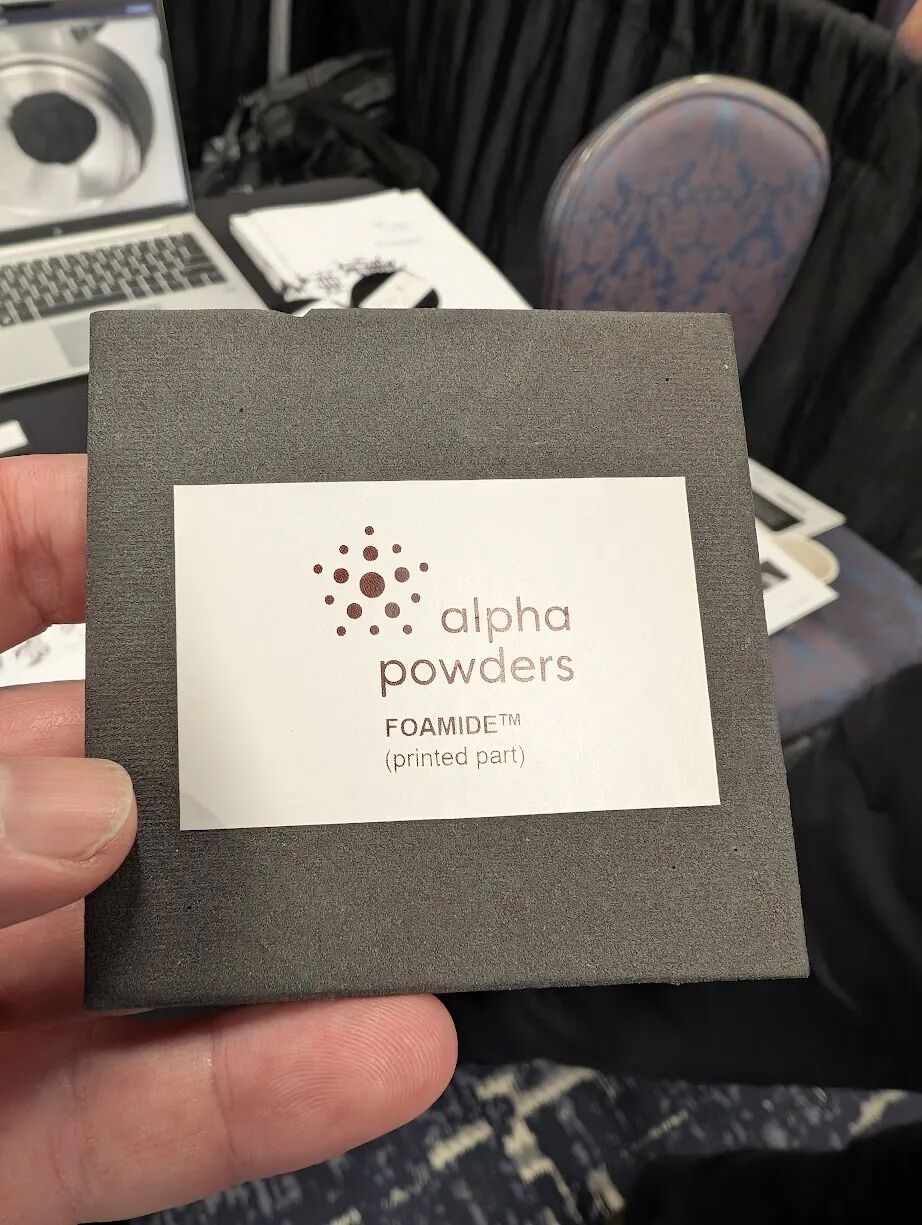Antarctic Bear Guide: This is a highly promising technology that can spheronize polymer powder materials, and we hope the industry pays attention.
In May 2025, Antarctic Bear learned that Alpha Powders, a startup based in Warsaw, aims to break the current lack of polymer supply channels for additive manufacturing through spheronization technology. Spheronization technology is a processing technique that can transform irregular plastic powders into optimized spherical powders suitable for powder bed fusion printing.

Dominik Zdybał, CEO of Alpha Powders, stated: “Plastic was never meant to be crushed. It should deform and be tough, not break. This is evident from the name.”
Typically, low-temperature methods for crushing plastics produce irregular particles that have poor flowability and high internal porosity. This is a critical issue in powder bed fusion applications, as the uniformity and flowability of the material are essential for the strength and repeatability of the parts.
The core innovation of Alpha Powders lies in transforming these irregular particles into spheres. The proprietary spheronization process can alter the shape and particle size distribution. Tests have shown that this transformation can generate uniform powders, reduce porosity, improve flowability, and enhance the tensile strength of printed parts.
Zdybał explained: “When you pour irregular powder into the machine, it releases a lot of harmful dust. This dust needs to be avoided, not only for health and environmental reasons but also because it can jam bearings and damage the machine.” In contrast, their spherical powders are ergonomic, easy to handle, reduce contamination risks, and improve printing consistency.
The spheronization process supports various advanced formulations. Alpha Powders is currently collaborating with equipment manufacturer Fisch Equipment to commercialize a carbon fiber-reinforced material based on polyamide. Zdybał highlighted one formulation: this powder has a stiffness of 3 GPa and a density of only 0.8 g/cm³, combining processability and printability. He said: “This is an ultra-light material with extremely high stiffness. It allows you to print very light, large-volume parts with high surface finish.”

△Alpha Powders Foamide 3D printing sample. Photo: Michael Petch.
Alpha Powders is committed to sustainable upgrades with its patented spheronization platform
Alpha Powders is expanding the applicability of its patented spheronization platform, providing a novel approach for recycling and upgrading waste plastics and powders generated from additive manufacturing processes. This technology uses colorants compatible with diode laser systems, capable of processing various thermoplastics, and is currently applied in a range of fields from elastomers to structural composites.
Zdybał explained: “All our powders are colored because many systems use diode lasers. You can also obtain polyolefin-based materials with extremely high elasticity and elongation at break. It is based on inherently inexpensive raw materials.”
The systems at Alpha Powders are not limited to virgin materials. They can post-process waste powders generated from selective laser sintering (SLS) to improve flowability and rheology. Results show that the quality of the input material is higher than that of the original raw material, firmly placing Alpha Powders’ method in the realm of upgrades and recycling.
Zdybał mentioned a recent collaboration with Fishy Filaments: “This is the purest form of recycling. That material—100% recycled fishing nets—was floating in Cornwall Bay two years ago. Now, it is being used to create a sustainable formulation along with recycled carbon fiber.”
Additionally, Alpha Powders’ spheronization process has been patented in major global markets including the United States, the European Union, China, South Korea, and Japan. The technology platform can handle various thermoplastics up to 260°C, including filled and colored composites as well as fiber-reinforced materials.
Zdybał said: “This is quite broad and also quite novel. You can use carbon fiber or any material you want to embed into the particles.”
He noted that the response at the AMUG conference was unexpectedly unanimous. “Everyone was in agreement. Even those who heard about this upgrade and powder manufacturing method for the first time could immediately understand the rationale behind it.”
While Alpha Powders hinted at an upcoming major project, Zdybał declined to disclose details. He said: “The best things we cannot show, but it will be very grand.”
Recent hot articles from Antarctic Bear:
“Tencent Cloud and Antarctic Bear held an AI-driven 3D printing progress exchange event”
“I dreamt of raising 20 billion yuan to acquire all listed 3D printing companies abroad and get into A-shares to become 290 billion”
“China’s 100-meter-level metal 3D printer will be built in Tianjin, developed by Beijing Institute of Technology, with ultra-large specifications for metal lattice structure multi-arc parallel 3D printing technology and equipment”
“CCTV reports: Under tariff bullying, the temporarily suspended US 3D printing toy orders are gradually returning”
Notice to 3D printing professionals:

△Scan to open the Antarctic Bear website, set WeChat to star☆, or open it in a mobile browser and set it to the mobile desktop